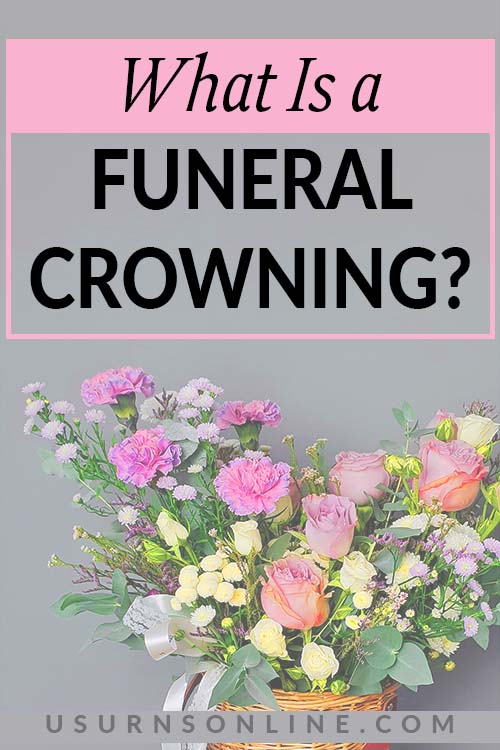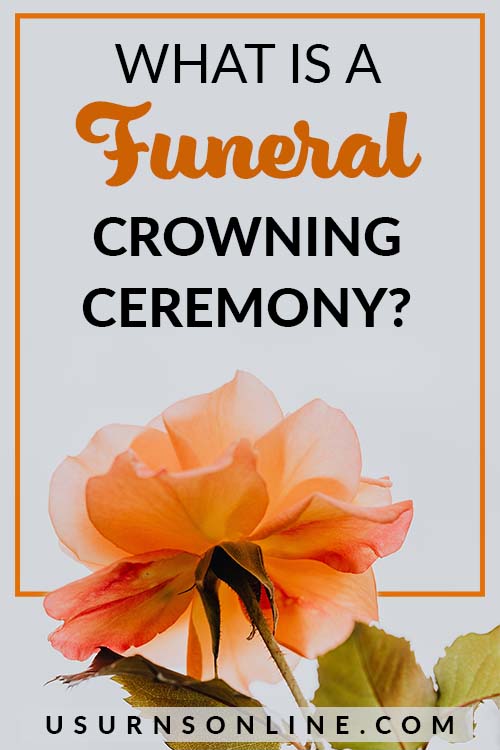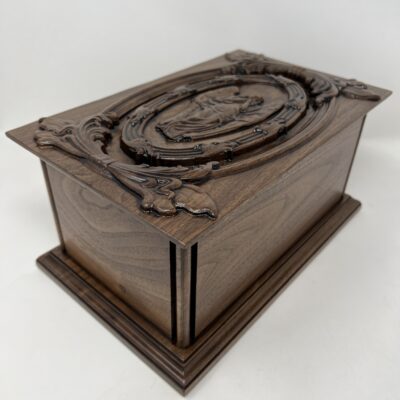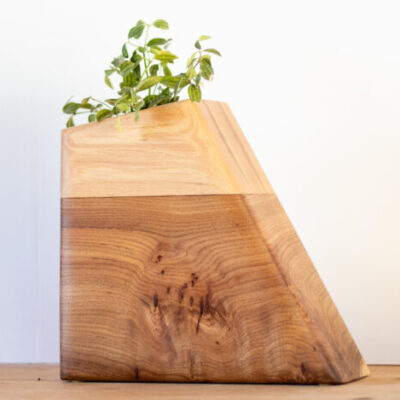A funeral crowning ceremony – have you ever heard of it? Today we’re going to talk all about it.
A funeral is often thought to be a sad event. Yes, it is a time for mourning and final goodbyes. It’s that final moment, that one last glimpse, before they are committed back to the earth.
Many cultures have held the significance of a cherished death with different kinds of celebrations.
In America, traditionally most families would have a markedly similar funeral process: from the wake to the funeral service and committal, followed by a repast where more casual, informal unity can be expressed.
In modern times, varied cultural expressions have come to the fore. One among the many cultures in the western world is the culture of African-descendants, African-Americans and Black-Canadians, whose ancestral practices mixed with Christian beliefs to form what is distinctly viewable as their own kind of Christian traditions.
Among those traditions is a fairly new one: the crowning ceremony.
What Is A Funeral Crowning?
A crowning ceremony at a funeral is much like any other crowning ceremony. However, the one receiving the crown is the person resting in the casket.
Funerals that include crowning ceremonies are part of a larger practice called a “homegoing.” Primarily a custom for African-American or Black-Canadian Christians, homegoings are named on the belief that the souls of those who are dead are “going home” to heaven.
Others take the meaning of “home” to mean “Africa,” where their spirit will return to their ancestral motherland. Aside from that, the ceremonies at hand are typically rooted in Christian tradition with more emphasis on being a higher energy celebration for the life of the one who passed.
Most homegoing’s emphasize music. Funeral homes which offer crowning ceremonies as a special service often pair them with musicians who will play in the crowd as they sing together. Gospel singing, musical preludes and interludes are all part of the full services, which also include Scripture reading, prayers, and eulogies.
Urns Made in the USA
Before the final viewing and benediction, there is the crowning ceremony itself. A crown is brought forth and presented, either by an officiant or by a member of the family.
These crowns sometimes belong to the funeral home, or they can be special ordered to be committed to earth with the person at rest. A funeral crown is exactly what you might think, a bejeweled and dazzling ornament for the head.
This crown is often presented to a piece of music, sung along by the gathering or by a special choir, and is placed on the head of the deceased, proving they were a king or queen both in life and in death. Then the service continues according to the funeral program.
Funeral Crown Meaning
The meaning of the funeral crowning ceremony comes from Revelation 2:10, which reads, “Be thou faithful unto death, and I will give thee a crown of life.”
The “crown of life” is not literal, but a promise of eternal life for those who believe in Christ. The tradition of “crowning” the loved one with a physical crown is a way to visualize that promise, to symbolically crown the one who has entered into everlasting life.
Funeral Crown Origin
This specific funeral practice is fairly modern, without much direct historical context to root it in anything other than a way to envisage the reality that our departed loved one is experiencing in the presence of God
However, throughout history there have been many cultural practices surrounding death that depict an idea of what happens in the afterlife.
Egypt
While not based directly on it, Egyptian practices decorated the deceased in the belief that they would take whatever they wore with them to the afterlife and should meet the judges of the dead in their finest clothing.
The practice of dressing the dead in such a belief has existed in many cultures, and royalty are especially given such treatment.
Poland
The Kingdom of Poland of the 1500s held this practice for some time, starting with King Stephen Bathory of Poland. The Funeral Crown, known in Latin as Corona Funebris, was part of the Polish Crown Jewels before it was sequestered into the country’s treasury where it has since been lost to time.
The crown would be exchanged between kings as they died while the still living monarchs wore a different crown, or would substitute an older crown for the same purpose.
Contemporary Practice
The modern twist of the crowning ceremony came up very recently – within the last couple of years, in fact. What spurred it on, perhaps, was the viral sensation of the “coffin dancers” seen in a video online. It showed a very real ceremony of men carrying a casket in rhythmic step to an upbeat and celebratory song.
While some viewed it as disrespectful, the whole ceremony was done at the request of those closest to the deceased. It’s simply a unique form of celebration for the dead, to stay joyful and positive for who they were in life.
Crowning ceremonies have shown up online in videos from time to time. As a recent trend, it can be seen as a newly emerging modern tradition, to hold a higher reverence for the dead as they go back home to God and receive the crown of life that is spoken of in the book of Revelation.
The elaborate and high scale of production for the full ceremony restricts it to families or communities who want to bring themselves together at a higher expense to celebrate the life of someone important. It’s a regal action requiring a somewhat regal price as well.
Types of Funeral Crowns
Funeral crowns are most likely to be provided by a funeral home. They may have a few in stock to choose from, and are primarily meant for show during the ceremony itself.
However, there are alternatives, and depending on who is organizing the ceremony, crowns can change the ceremony’s meaning as well.
Costume Crowns & Tiaras
The most common type of crown used in the ceremony. They are often very flashy, with tons of jewels to add to a lustrous effect.
The key word to these is “fabulous,” to give the deceased in their rest a brilliant and shining appearance even in death. These are what funeral homes usually have in stock and at the ready for any funeral occasion.
Flower Crowns
In place of heavy and hard metal, flower wreaths and hand-woven flower crowns can also be used. These have their own unique context.
In old European cultures, when a woman died unmarried and as a maiden, it was said that her soul would go to God as a bride, since the Scriptures speak of believers as the “bride of Christ.” These flower crowns were therefore made to symbolize that bond and bless her as a bride who had no husband in life.
Nowadays, flower crowns can simply be a suitable alternative to metal or plastic, bringing the dead back to nature.
DIY Funeral Crowns
Those most personally affected by the tragedy of loss may want some say in the uniqueness of their loved one’s crown, enough to want to make it themselves.
It can be much more symbolic of the individual as a way to highlight their achievements, or something made as an addition to their favorite headwear that already exists so they can take it with them to the afterlife.
If organizing with a funeral home, the self-made crown should be brought in well in advance so it can be prepared or touched up with their in-house services.
What to Do & Say in a Funeral Crowning Ceremony
A funeral is a funeral, but with a crowning ceremony, there’s more jubilation and celebration for the life that’s been. There’s a more involved service, with group songs and hymnals. But as for what to expect, think of it as an ordinary funeral with some additional celebrations.
So when you go, do what you would typically do at a funeral. Give sympathies to the families, eulogize the deceased, and sing along to help match the energy when it’s time to sing.
If you can’t sing, engage in some way. Clap along if people are doing it, or hum if you only know the beat. Add your voice to the chorus that is singing in honor of the resting king or queen – that’s what it’s about.
Is Funeral Crowning For Everyone?
As a tradition, the funeral crowning ceremony emerged in Black communities. However, any method of worship that fits with a faith community is perfectly fine as long as it’s done with all due respect.
The act of a crowning ceremony, even removed from the context of homegoing, is to offer a final gift of grace to the departed which they may not have received in life. A recognition of their importance in the lives of others, and a crowning of the life they lived, however short it might have been.
Indeed, this service has been given to children as well as older adults, acknowledging that they were kings or queens in life.
It also doesn’t have to strictly be a Christian tradition, as so many traditions have passed from one culture to another without retaining spiritual context. One could see the crowning ceremony as a way to put a more acceptable positive spin into the ordinary procession of a funeral, to turn it into an event which invites a wider range of emotions for everyone to experience and celebrate life rather than mourn death. The only thing which may be hard to come by is a crown.
Standard crowns are made of metal and bejeweled to look fabulous and captivating. Funeral homes offering this service will have their own crowns, which are either presented during the ceremony or are placed and then withdrawn while the body is being moved from a central viewing to a closed casket state for interment.
The crowning ceremony is just another part of the overall funeral events, between sermons and eulogies, or can be played up as the main event of the day.
Should You Plan a Funeral Crowning Ceremony?
Funeral trends come and go. Some methods are only popular within select groups or communities, or are done in observation of other cultures.
The funeral crowning ceremony is a newer trend. If it gains a lot of traction, it may end up becoming a mainstay in many funerals. It’s a way to pay tribute to the deceased beyond the norm, so that even if they could not achieve fame or fortune in life, they can go out like a king or a queen.
Read Next: New & Old Funeral Traditions
Pin It





